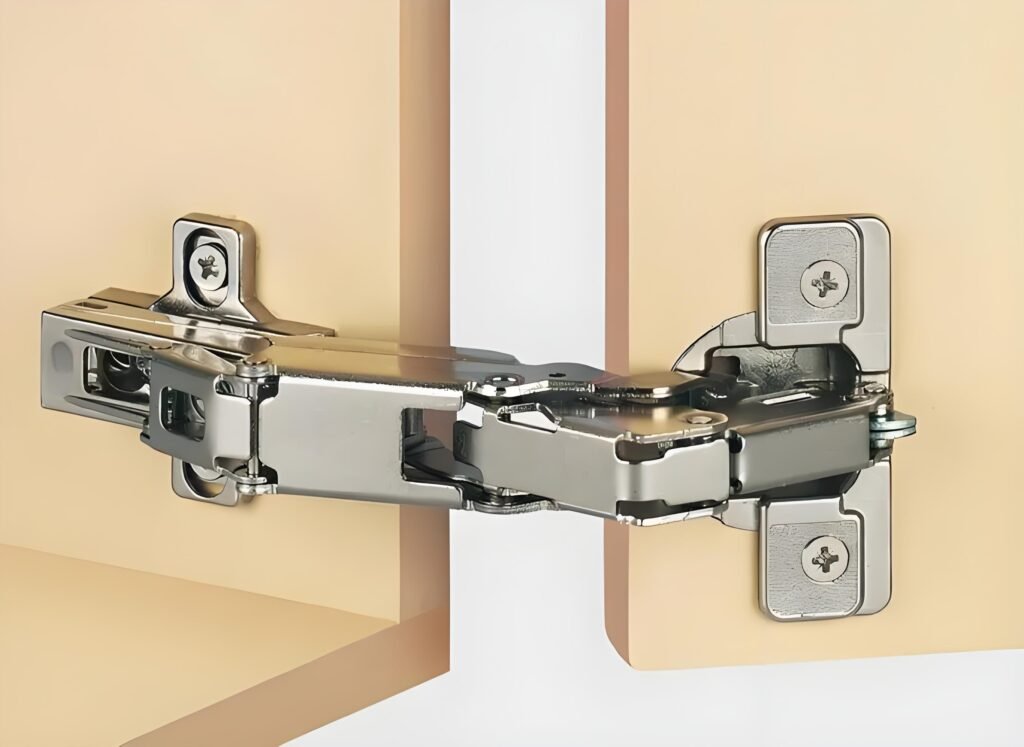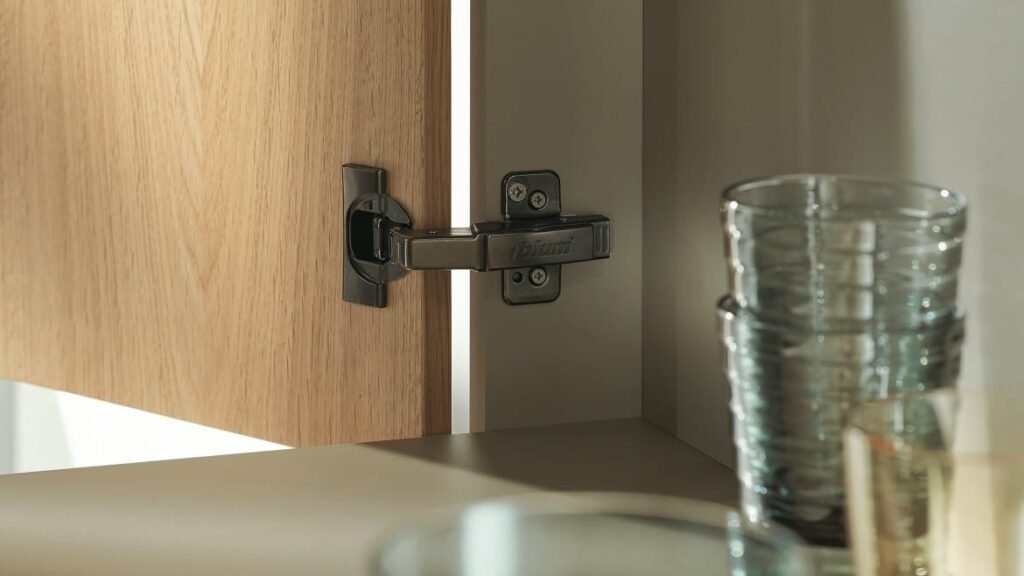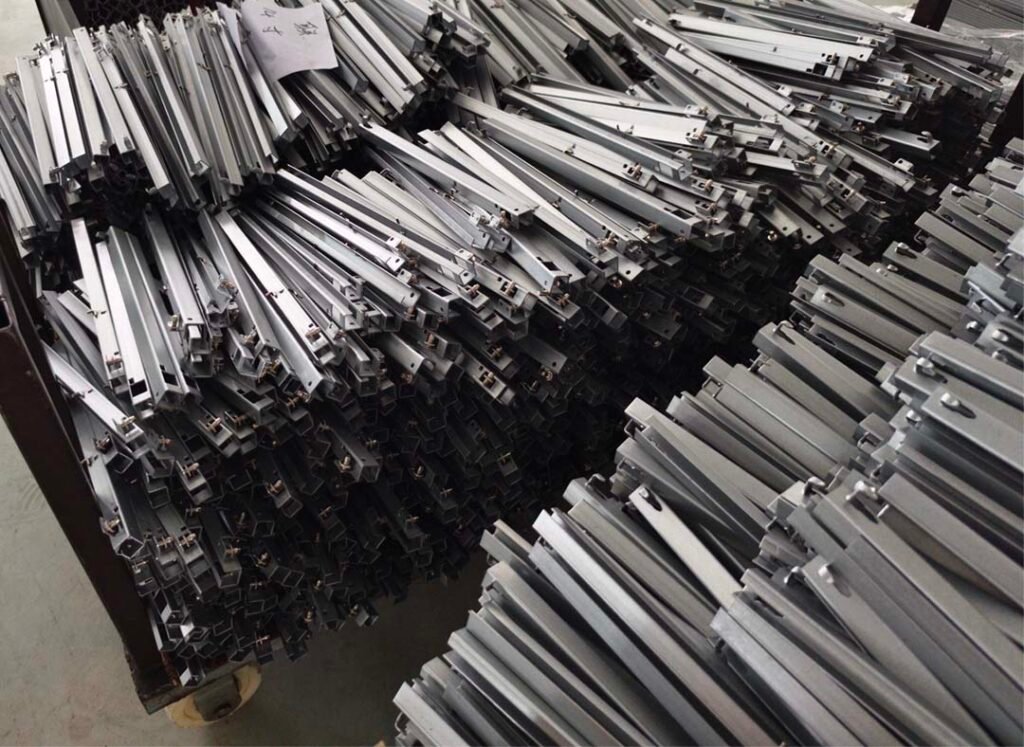
ø35 Removable Soft Close Hinges - KL207
Inset(C=18)
Main Material: Cold-rolled steel/Q235
Finish: Nickel Plated/Gunmetal
Opening hinge: 155°
Drilling dimension on aluminum profile hinge head: 38mm
Product thickness: 1.0mm
Door thickness: 22-25mm
Optional 2-section, 3D adjustment, iron buckle, color.
Application Segment
Cabinet Doors, Wardrobe Doors


Our Services

MOQ Offered
We provide flexible minimum order quantities, allowing you to start small and scale up as needed.

Large Inventory
Ensuring Ample Stock for Immediate Shipment, Eliminating Wait Times for Production.

Complete Specifications
We refine various specifications of hinges according to different usage scenarios.
AOLISHENG manufactures soft close hinges that meet standards, offering customized services and solutions to help your business succeed.
Why Choose AOLISHENG
Rich Experience
With years of soft close hinges production experience, we have a team of professionals specializing in hinge design, manufacturing, and management.
Leading Production Capacity
We possess CNC machining for heavy-duty applications, wire-cutting machines, automated balancing, pressing equipment, and electroplating production lines for hinge manufacturing.
Quality Assurance
All hinges undergo over 48 hours of salt spray testing and are subjected to more than 80,000 cycles of open-close testing with appropriate door weights, meeting the quality standards of QB/T2189-1995.
Mass Production Capability
With over 10,000 square meters of production facilities and thousands of square meters dedicated to electroplating workshops, we ensure a large-scale supply of hinges.
We Look Forward To Your Contact
AOLISHENG is your trusted global partner for high-quality drawer slide and hinges production, with strategic factories worldwide and professional local service teams. Partnering with AOLISHENG ensures efficient project delivery, robust supply chains, expert technical support, and a thriving customer base.
FAQ
What's the difference between self-close and soft close?
Self-Close and Soft Close are two types of hinge functions that differ in how they behave and work when the door is closed. Here are their main differences:
1. Self-Close
Function: Self-close hinges automatically pull the door toward the closed position after it leaves the open position. The hinge’s spring or other mechanism automatically attracts the door to the closed position as it approaches closing.
Closing Method: The door may close at a faster speed, producing some banging noise, especially when it fully contacts the door frame.
Application: Commonly used in places where the door needs to close automatically, such as kitchen cabinets and bathroom cabinet doors.
2. Soft Close
Function: Soft Close hinges not only pull the door toward the closed position but also gradually slow down the closing speed as the door approaches full closing, allowing the door to close smoothly and quietly.
Closing Method: The door’s closing speed becomes slow and smooth as it approaches the door frame, with almost no banging noise, providing a quieter closing experience.
Application: Commonly used in cabinet doors and wardrobe doors in home decoration to improve comfort and quietness.
Summary
Self-closing hinges: automatically close the door, but may be faster and produce some noise.
Soft close hinges: provide a smooth buffer when the door is close to closing, allowing the door to close quietly and smoothly.
Why do soft close hinges fail?
Although designed to provide a smooth, quiet door-closing experience, soft close hinges can have some issues during use. Here are some common reasons why soft close hinges fail:
1. Improper Installation
Misalignment: If the hinge is not installed correctly, it can cause the door to not align properly when closed, affecting the soft close function.
Improper Grooves: Grooves on the door and door frame can also affect the proper function of the hinge if they are not cut accurately.
2. Excessive Use
Frequent Opening and Closing: If the door is opened and closed frequently, especially in a short period, this can cause the cushioning mechanism of the soft close hinge to wear out or fail.
Heavy Doors: Doors that exceed the hinge’s design load capacity can cause the hinge’s soft close function to fail.
3. Inadequate Maintenance
Dirt and Dust: The cushioning mechanism inside the hinge can cause its function to deteriorate if dirt and dust accumulate.
Inadequate Lubrication: Lack of proper lubrication can affect the hinge’s motion performance, thus affecting the soft close function.
4. Design and Manufacturing Defects
Hinge Quality: Low-quality or design-defective soft close hinges can fail under normal use conditions.
Material issues: If the material used in the hinge is not durable enough, it may cause damage or failure of the buffer mechanism.
5. Improper adjustment
Buffer settings: Many soft close hinges have adjustable buffer settings, which, if adjusted incorrectly, may cause the closing process to be jerky or too fast.
Mounting angle: If the hinge is installed at the incorrect angle, it may affect the closing effect of the door.
6. Environmental factors
Temperature changes: Extreme temperature changes may affect the hinge’s lubricant or buffer mechanism, thereby affecting its function.
Humidity: High humidity environments may cause the metal parts of the hinge to rust or corrode, affecting the service life and performance.
Summary
The reasons for the failure of soft close hinges are usually related to improper installation, overuse, insufficient maintenance, design and manufacturing defects, improper adjustment, and environmental factors. To ensure the normal function of soft close hinges, it is recommended to follow the manufacturer’s instructions during installation, perform regular maintenance, and choose high-quality hinge products. If problems occur, check and adjust the hinge settings to ensure that it is functioning properly.
Are soft close hinges worth it?
Whether soft close hinges are worth using depends on your needs and budget. Here are some considerations:
Pros
1. Reduce noise: Provide a smooth and quiet door-closing experience, suitable for spaces that require a quiet environment, such as bedrooms or offices.
2. Protect doors and door frames: Reduce the impact when the door closes, reduce wear and tear on the door and door frames, and extend the service life.
3. Improve comfort: Provide higher comfort and a sense of luxury, especially in home and high-end commercial environments.
Disadvantages
1. Higher cost: Usually more expensive than ordinary hinges, increasing the overall decoration cost.
2. Complex installation and maintenance: Professional installation and regular maintenance may be required, and adjusting settings may also be complicated.
3. Possible functional limitations: Special soft close hinges may be required for some heavy doors or specially designed doors, and performance may not be as expected.
Summary
If you value the door’s closing smoothness and noise control, and your budget allows, soft close hinges are worth the investment. They improve the user experience and door durability. However, if cost or installation complexity is the main consideration, you may need to weigh whether to choose the soft close function.
Is it difficult to install soft close hinges?
The difficulty of installing soft close hinges depends on several factors, including your experience level, tool preparation, and the condition of the door and door frame. Here are some key points in the installation process:
1. Basics
Hinge Types: Understand the types and installation requirements of soft close hinges and make sure they are compatible with existing doors and door frames.
Mounting Location: Make sure to accurately measure and determine the installation location of the hinge so that the door can open and close smoothly.
2. Installation Process
Recess Cutting: It is usually necessary to cut a groove in the door and door frame to accommodate the hinge. This requires precise measurements and tools.
Alignment: Make sure the hinge is aligned with the door and door frame so that the door can close smoothly.
Adjustment: After installation, you may need to adjust the cushion setting of the hinge to ensure that the soft close function is normal.
3. Tools and Accessories
Tools: Usually a screwdriver, electric drill, and groove-cutting tool are required. Without these tools, installation may be more difficult.
Accessories: Make sure all necessary accessories (such as screws and washers) are ready.
4. Installation Difficulties
Precision: A high degree of precision is required during installation, and any small mistake may affect the closing effect of the door.
Adjustment Complexity: The adjustment of soft-close hinges can be complicated, especially for first-time installers.
5. Recommendations
Follow instructions: Read and follow the manufacturer’s installation instructions carefully.
Seek help: If you are not familiar with the installation process, consider seeking professional help or consulting someone with experience.
Summary
Although installing soft close hinges may require certain skills and tools, it can be done if you measure carefully, cut accurately, and follow the instructions. If you feel unsure, you can ask a professional to help ensure the installation is effective.
Can you install soft close to existing drawers?
Yes, it is possible to add a soft-close feature to an existing drawer, but this usually requires the use of a soft-close drawer slide or a soft-close conversion kit. Here are the steps and considerations for how to do it:
1. Choose the right soft-close slide or conversion kit
Soft-close slides: Many businesses offer replacement soft-close drawer slides that include a built-in cushioning mechanism to allow the drawer to close smoothly.
Soft-close conversion kits: If you do not want to replace your slides, you can choose a soft-close conversion kit, which usually includes a cushioning mechanism that is installed on the existing slides.
2. The installation process
Remove the existing slides: If you are using soft-close slides, you will need to remove the old drawer slides first.
Install the new slides: Install the new soft-close slides according to the manufacturer’s instructions, making sure the slides are aligned horizontally and securely fastened.
Install the conversion kit: If you are using a soft-close conversion kit, install it on the existing slides according to the instructions.
3. Adjust and test
Adjust the function: After installation, you may need to adjust the soft-close function settings to ensure that the drawer closes smoothly.
Test: Open and close the drawer several times to check that the soft-close effect is as expected and to ensure that the cushioning function is working properly.
4. Tools and Accessories
Tools: You may need a screwdriver, drill, or other tools for installation.
Accessories: Make sure you have all the necessary accessories and installation instructions.
Summary
It is possible to add a soft-close feature to an existing drawer, either by replacing the slides or using a conversion kit. Make sure you choose the right product and follow the instructions to ensure the soft-close feature works properly and provides a smooth experience.
